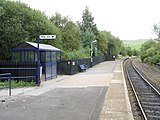Newhey tram stop
Newhey | ||||||||||||||||||||||||||||||||||||||||||||||||||||||||||||||||||||||||||||||||||||||||||||||||||||||||||||||||||||||||||||||||||||||||||||||||||||||||||||||||||||||||||||||||||||||||||||||||||||||||||||||||||||||||||
|---|---|---|---|---|---|---|---|---|---|---|---|---|---|---|---|---|---|---|---|---|---|---|---|---|---|---|---|---|---|---|---|---|---|---|---|---|---|---|---|---|---|---|---|---|---|---|---|---|---|---|---|---|---|---|---|---|---|---|---|---|---|---|---|---|---|---|---|---|---|---|---|---|---|---|---|---|---|---|---|---|---|---|---|---|---|---|---|---|---|---|---|---|---|---|---|---|---|---|---|---|---|---|---|---|---|---|---|---|---|---|---|---|---|---|---|---|---|---|---|---|---|---|---|---|---|---|---|---|---|---|---|---|---|---|---|---|---|---|---|---|---|---|---|---|---|---|---|---|---|---|---|---|---|---|---|---|---|---|---|---|---|---|---|---|---|---|---|---|---|---|---|---|---|---|---|---|---|---|---|---|---|---|---|---|---|---|---|---|---|---|---|---|---|---|---|---|---|---|---|---|---|---|---|---|---|---|---|---|---|---|---|---|---|---|---|---|---|---|
| Metrolink station | ||||||||||||||||||||||||||||||||||||||||||||||||||||||||||||||||||||||||||||||||||||||||||||||||||||||||||||||||||||||||||||||||||||||||||||||||||||||||||||||||||||||||||||||||||||||||||||||||||||||||||||||||||||||||||
 Newhey tram stop, in February 2013 | ||||||||||||||||||||||||||||||||||||||||||||||||||||||||||||||||||||||||||||||||||||||||||||||||||||||||||||||||||||||||||||||||||||||||||||||||||||||||||||||||||||||||||||||||||||||||||||||||||||||||||||||||||||||||||
| General information | ||||||||||||||||||||||||||||||||||||||||||||||||||||||||||||||||||||||||||||||||||||||||||||||||||||||||||||||||||||||||||||||||||||||||||||||||||||||||||||||||||||||||||||||||||||||||||||||||||||||||||||||||||||||||||
| Location | Newhey, Rochdale England | |||||||||||||||||||||||||||||||||||||||||||||||||||||||||||||||||||||||||||||||||||||||||||||||||||||||||||||||||||||||||||||||||||||||||||||||||||||||||||||||||||||||||||||||||||||||||||||||||||||||||||||||||||||||||
| Coordinates | 53°36′03″N 2°05′41″W / 53.60083°N 2.09465°W | |||||||||||||||||||||||||||||||||||||||||||||||||||||||||||||||||||||||||||||||||||||||||||||||||||||||||||||||||||||||||||||||||||||||||||||||||||||||||||||||||||||||||||||||||||||||||||||||||||||||||||||||||||||||||
| Line(s) | Oldham and Rochdale Line | |||||||||||||||||||||||||||||||||||||||||||||||||||||||||||||||||||||||||||||||||||||||||||||||||||||||||||||||||||||||||||||||||||||||||||||||||||||||||||||||||||||||||||||||||||||||||||||||||||||||||||||||||||||||||
| Platforms | 2 | |||||||||||||||||||||||||||||||||||||||||||||||||||||||||||||||||||||||||||||||||||||||||||||||||||||||||||||||||||||||||||||||||||||||||||||||||||||||||||||||||||||||||||||||||||||||||||||||||||||||||||||||||||||||||
| Other information | ||||||||||||||||||||||||||||||||||||||||||||||||||||||||||||||||||||||||||||||||||||||||||||||||||||||||||||||||||||||||||||||||||||||||||||||||||||||||||||||||||||||||||||||||||||||||||||||||||||||||||||||||||||||||||
| Status | In operation | |||||||||||||||||||||||||||||||||||||||||||||||||||||||||||||||||||||||||||||||||||||||||||||||||||||||||||||||||||||||||||||||||||||||||||||||||||||||||||||||||||||||||||||||||||||||||||||||||||||||||||||||||||||||||
| Fare zone | 4 | |||||||||||||||||||||||||||||||||||||||||||||||||||||||||||||||||||||||||||||||||||||||||||||||||||||||||||||||||||||||||||||||||||||||||||||||||||||||||||||||||||||||||||||||||||||||||||||||||||||||||||||||||||||||||
| History | ||||||||||||||||||||||||||||||||||||||||||||||||||||||||||||||||||||||||||||||||||||||||||||||||||||||||||||||||||||||||||||||||||||||||||||||||||||||||||||||||||||||||||||||||||||||||||||||||||||||||||||||||||||||||||
| Opened | 2 November 1863 | |||||||||||||||||||||||||||||||||||||||||||||||||||||||||||||||||||||||||||||||||||||||||||||||||||||||||||||||||||||||||||||||||||||||||||||||||||||||||||||||||||||||||||||||||||||||||||||||||||||||||||||||||||||||||
| Previous names | New Hey | |||||||||||||||||||||||||||||||||||||||||||||||||||||||||||||||||||||||||||||||||||||||||||||||||||||||||||||||||||||||||||||||||||||||||||||||||||||||||||||||||||||||||||||||||||||||||||||||||||||||||||||||||||||||||
| Key dates | ||||||||||||||||||||||||||||||||||||||||||||||||||||||||||||||||||||||||||||||||||||||||||||||||||||||||||||||||||||||||||||||||||||||||||||||||||||||||||||||||||||||||||||||||||||||||||||||||||||||||||||||||||||||||||
| 2009 | Closed as a rail station | |||||||||||||||||||||||||||||||||||||||||||||||||||||||||||||||||||||||||||||||||||||||||||||||||||||||||||||||||||||||||||||||||||||||||||||||||||||||||||||||||||||||||||||||||||||||||||||||||||||||||||||||||||||||||
| 28 February 2013 | Conversion to Metrolink operation | |||||||||||||||||||||||||||||||||||||||||||||||||||||||||||||||||||||||||||||||||||||||||||||||||||||||||||||||||||||||||||||||||||||||||||||||||||||||||||||||||||||||||||||||||||||||||||||||||||||||||||||||||||||||||
| ||||||||||||||||||||||||||||||||||||||||||||||||||||||||||||||||||||||||||||||||||||||||||||||||||||||||||||||||||||||||||||||||||||||||||||||||||||||||||||||||||||||||||||||||||||||||||||||||||||||||||||||||||||||||||
| ||||||||||||||||||||||||||||||||||||||||||||||||||||||||||||||||||||||||||||||||||||||||||||||||||||||||||||||||||||||||||||||||||||||||||||||||||||||||||||||||||||||||||||||||||||||||||||||||||||||||||||||||||||||||||
Newhey is a tram stop on the Oldham and Rochdale Line (ORL) of Greater Manchester's light-rail Metrolink system. It opened to passengers on 28 February 2013 and is located in Newhey, a suburban village the Metropolitan Borough of Rochdale, England.
The stop sits on the site of New Hey railway station, a regional rail station which opened on 2 November 1863[1] and closed on 3 October 2009 for conversion from heavy rail to light rail. It was along the Oldham Loop Line, which operated from Manchester to Rochdale via Oldham and thus was almost identical to the current Metrolink route.
History
The station was situated on the Manchester to Rochdale via Oldham route which connected the city of Manchester to the town of Rochdale via Oldham and a number of smaller districts and suburbs including Newhey. At the time the station opened it was as part of a new line from Oldham Mumps to Rochdale East Junction, and created a Middleton Junction to Rochdale route. In 1880 a line was built from Oldham Werneth to Thorpes Bridge Junction near Newton Heath. Subsequently, the whole Thorpes Bridge Junction to Rochdale East Junction route became known as the Oldham Loop Line. The pattern of train services on the Oldham Loop Line involved a greater number of trains serving the Oldham stations, and less services continuing on to New Hey and Rochdale. In the 1960s and 1970s fewer and fewer trains ran from Oldham Mumps to Rochdale, and in May 1972 the Secretary of State for Transport announced that this part of the Oldham Loop including New Hey Station would be closed. The closure did not go ahead because what later became the Greater Manchester Passenger Transport Executive (GMPTE) agreed to fund the continuation of services. The involvement of the GMPTE also lead to a more frequent pattern of trains serving the Oldham Mumps to Rochdale section including New Hey,[2] though the Rochdale to Shaw portion was reduced to single track to reduce maintenance costs (leaving only one platform in use).
The station closed on 3 October 2009 for the conversion of the line to Metrolink and re-opened as Newhey Metrolink station, with the modern spelling of the village's name, from 28 February 2013.[3] The route was re-doubled during conversion to allow a more frequent service to operate and thus the rebuilt station has two platforms.
Services
Railways in Rochdale | |||||||||||||||||||||||||||||||||||||||||||||||||||||||||||||||||||||||||||||||||||||||||||||||||||||||||||||||||||||||||||||
|---|---|---|---|---|---|---|---|---|---|---|---|---|---|---|---|---|---|---|---|---|---|---|---|---|---|---|---|---|---|---|---|---|---|---|---|---|---|---|---|---|---|---|---|---|---|---|---|---|---|---|---|---|---|---|---|---|---|---|---|---|---|---|---|---|---|---|---|---|---|---|---|---|---|---|---|---|---|---|---|---|---|---|---|---|---|---|---|---|---|---|---|---|---|---|---|---|---|---|---|---|---|---|---|---|---|---|---|---|---|---|---|---|---|---|---|---|---|---|---|---|---|---|---|---|---|
Past, present and future
| |||||||||||||||||||||||||||||||||||||||||||||||||||||||||||||||||||||||||||||||||||||||||||||||||||||||||||||||||||||||||||||
| |||||||||||||||||||||||||||||||||||||||||||||||||||||||||||||||||||||||||||||||||||||||||||||||||||||||||||||||||||||||||||||
Newhey is located on the Oldham & Rochdale Line with trams towards Manchester city centre and Rochdale running every 12 minutes throughout the day Mondays to Sundays.[4]
| Preceding station | Following station | |||
|---|---|---|---|---|
| Shaw and Crompton towards East Didsbury
|
East Didsbury–Rochdale | Milnrow towards Rochdale Town Centre
| ||
| Historical railways | ||||
| Shaw and Crompton | L&YR Oldham Loop Line |
Milnrow | ||
Connecting bus routes
| Route | Destination 1 | Destination 2 | Operator | Service | Stop Location |
|---|---|---|---|---|---|
| 408 | Rochdale |
Oldham |
FirstGroup | Mon-Sun | Shaw Road |
| R5 | Rochdale |
Peppermint Bridge | Burnley Bus Company | Mon-Sat Daytime |
Huddersfield Road |
Gallery
-
September 2009
-
Conversion to Metrolink, September 2010
References
- ^ Butt, R.V.J. (1995). The Directory of Railway Stations. Yeovil: Patrick Stephens Ltd. p. 169. ISBN 1-85260-508-1. R508.
- ^ "Disused Stations: New Hey Station". www.disused-stations.org.uk. Retrieved 20 April 2018.
- ^ "Next stop: Rochdale!". Transport for Greater Manchester. 20 February 2013. Archived from the original on 23 May 2013. Retrieved 20 February 2013.
- ^ "Metrolink - Tram Times - Newhey". Metrolink. Retrieved 4 March 2013.
- ^ "Newhey tram stop Transport for Greater Manchester". Transport for Greater Manchester. Retrieved 23 October 2022.





